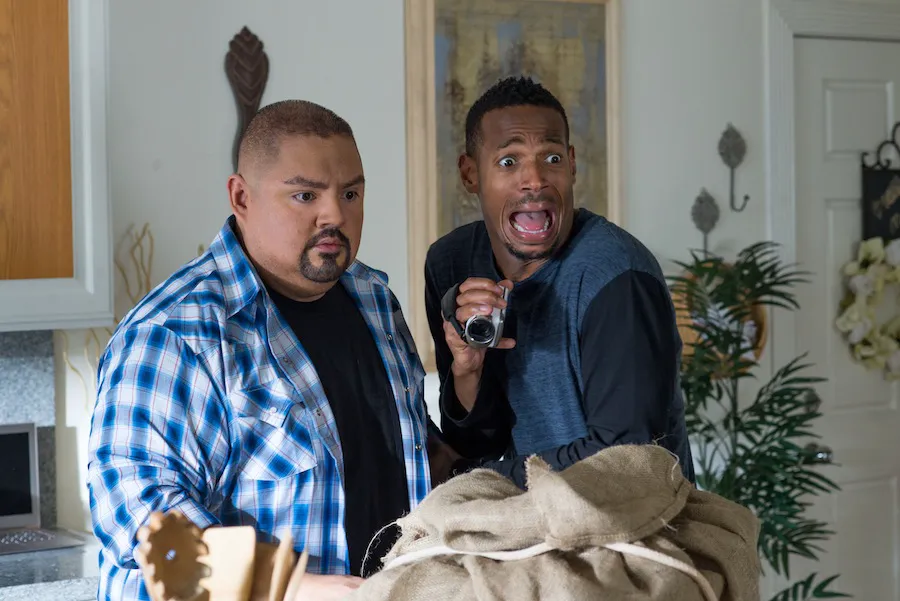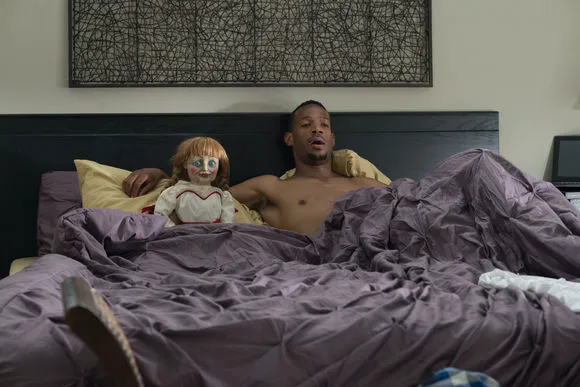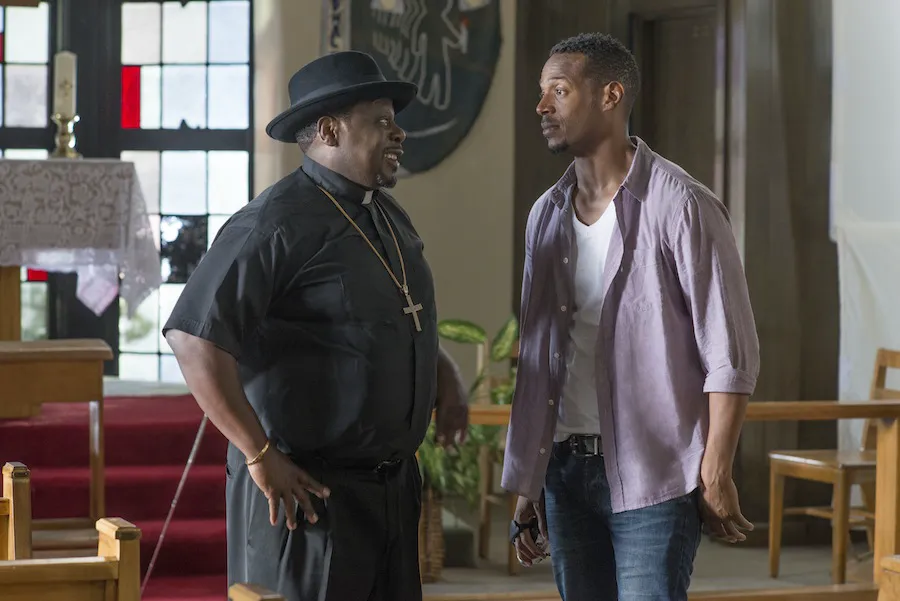Malcolm (Marlon Wayans), unable to cope with his lover Keisha’s obsession, abandons her to die in a wrecked car and flees. A year later, he has started a new family with single mother Megan (Jaime Pressly) and moves into a new house with her. There, he immediately encounters an army of various evil spirits: Megan’s son gets an imaginary friend, her daughter finds a box with a demon inside, Megan brings a creepy Annabelle doll into the house, and Malcolm himself discovers a box of old tapes in the attic. Eventually, the possessed Keisha, who has unfinished business with Malcolm, joins this motley crew.

Once a promising talent, Marlon Wayans gradually squandered all the credit he received after the now-classic parodies “Don’t Be a Menace to South Central While Drinking Your Juice in the Hood” and “Scary Movie.” While “White Chicks” (2004) still made some money on inertia, “Little Man” (2006) and “Dance Flick” (2009) significantly underperformed. From this, Wayans drew a somewhat non-obvious conclusion: if films costing $25 million don’t pay off, you need to make films ten times cheaper, and everyone will be happy. Surprisingly, the calculation worked for “A Haunted House” – a silly parody of mystical mockumentaries that, thanks to its low budget, paid off tenfold. Well, there’s no one to blame but ourselves; now, here’s the sequel.
Parodying Horror

If the first film primarily targeted “Paranormal Activity,” the second part significantly expands the range of parodied horrors. Here you have “The Possession,” “The Devil Inside,” “The Conjuring,” “Sinister,” “Insidious,” “The Last Exorcism Part II,” and, of course, the ubiquitous “Paranormal Activity 4.” To avoid the trouble of fitting different parody lines together, Wayans simply distributed different films among different characters. The result is still uneven, but since when has that been a drawback for a parody?
The Downside of Excess

However, “A Haunted House 2” still has plenty of flaws, the main one being that Wayans is constantly “carried away.” He never stops in time, squeezing every joke until it turns to dust. Sometimes it works – in the absurd scene with the killed puppy at the beginning of the film or in the sex scene with Annabelle (wildly vulgar but surprisingly funny) – but for the most part, this approach turns simply unsuccessful gags into outright unbearable ones. The long “runs” of characters, repeating the same jokes in every possible way (racism, sexism, toilet humor – everything is fair game, there are no forbidden topics for Wayans), become frankly exhausting by the end. The first film was more concise in this regard.
Wayans’ Charisma
What prevents the film from falling apart is Marlon Wayans himself. No matter what, he is an actor of immense charisma who has somehow remained almost the only black comedian of this kind of role. Eddie Murphy? Chris Rock? Martin Lawrence? Chris Tucker? Where are they all? The way he selflessly throws himself into the breach of silly gags, literally turning himself inside out, involuntarily inspires great respect. Where even the seasoned Jaime Pressly hesitates (after all, she has played a bunch of ridiculous heroines in her time!), Wayans splashes around so cheerfully and effortlessly that you sometimes even forget that he is splashing not in the clear and transparent Maldivian waters, but in a fetid puddle near a garbage dump that hasn’t been taken out for weeks